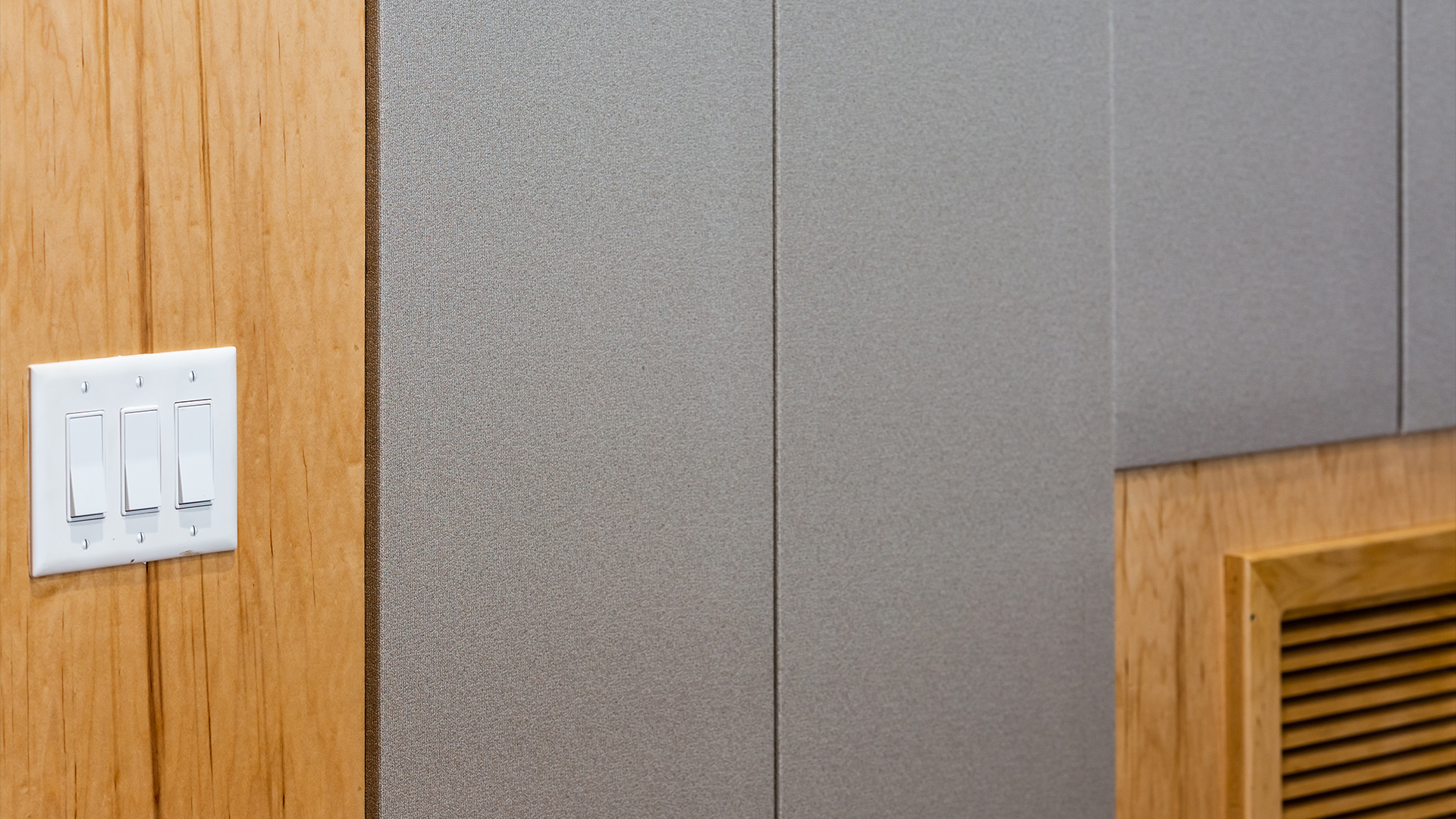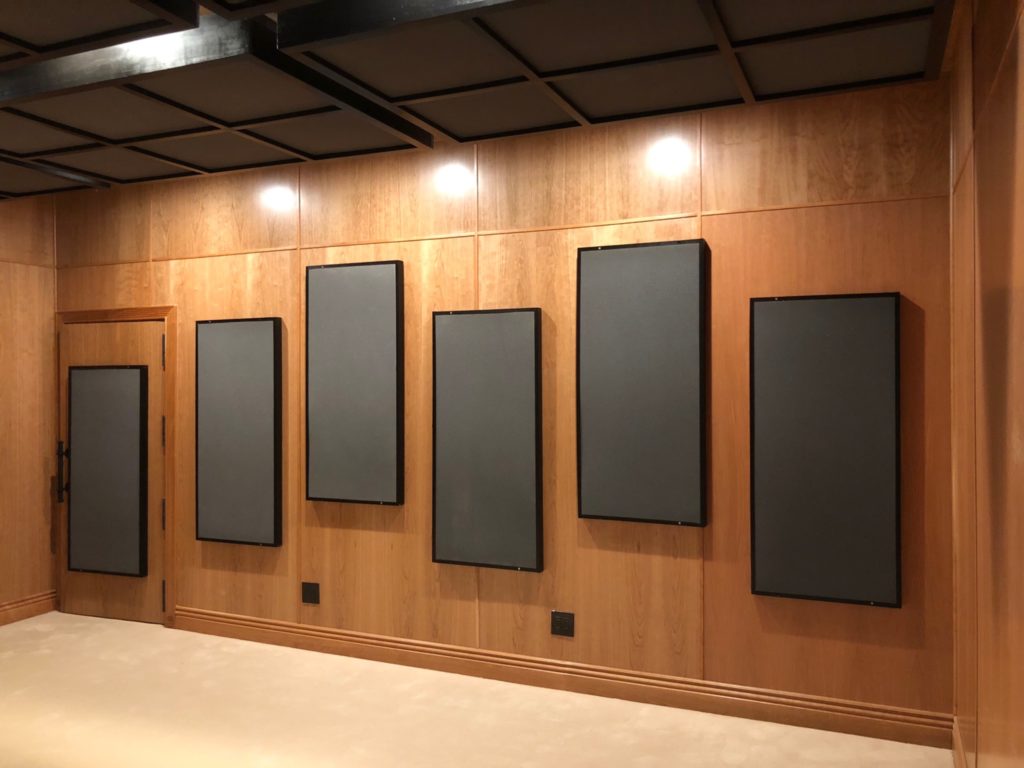
The term acoustic fabric panel can have many meanings based upon the function of the acoustic fabric panel and what its usage is. Acoustic fabric panels can be designed to treat low frequency energy along with middle and high frequency energy. The most common definition of the term acoustic fabric panel is to absorb middle and high frequency energy that contributes to higher reverberation or reflections within our rooms.
Reverberation is defined as how long a sound stays around within a room after it has been sung, spoken, or played. High reverberation times are contributed to by adding all the reflections from the four walls, along with the floor and ceiling. Every surface area within our rooms contributes around 17% to the total reverberation time of any room. It is these surface areas that must be treated with any acoustic fabric panel.
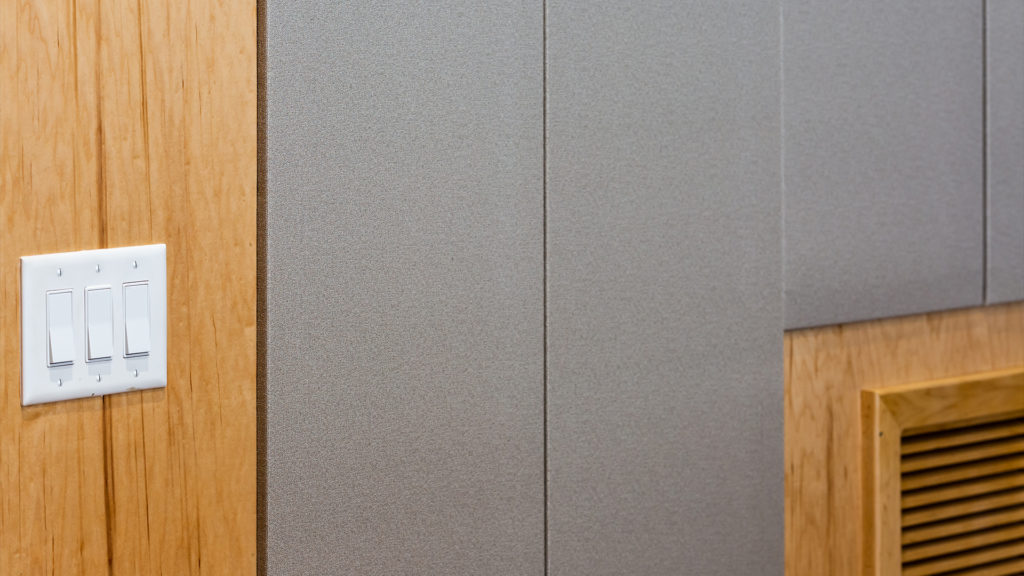
Reduce Reverberation Issues with Acoustic Fabric Panels
The frequency response that an acoustic fabric panel addresses is middle and high frequency energy that ranges from 125 hz. – 6,000 hz. This is the frequency range that must be addressed when you are trying to manage high reverb times. Reverberation is not echo. People think reverberation is echo. It is not. Echo is a repeating signal. Reverberation is the summation of all the middle and higher frequency reflections from our walls, floor, and ceiling with each surface area contributing approximately 17% to the total issue.
Treat at least 65% of the surface area
When treating reverberation issues with any form of an acoustic fabric panel, you must treat at least 65% of the surface area on 65% of the total amount of surface areas. This is called critical mass. We must cover enough of each wall, to get enough of the reverb issue resolved. In most rooms this formula will require that a minimum of three walls surfaces be treated with at least a 65% surface with acoustic fabric panels.
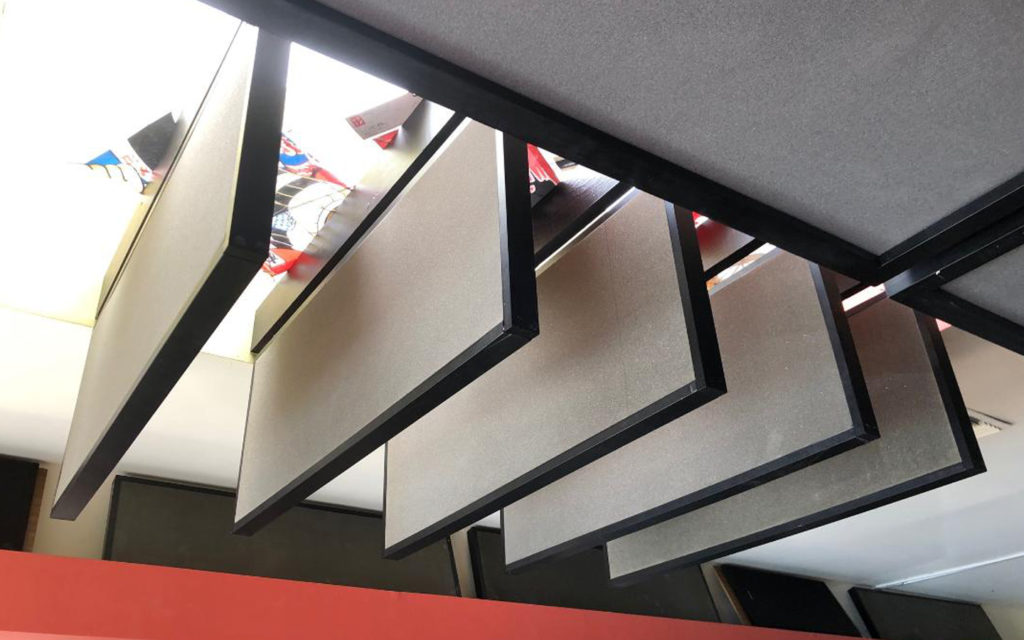
Only Use Acoustic Frame Panels with Air Permeability
Any acoustic fabric panels work using air flow. Air moves across the surface area of the panel and friction is created. When you have friction, you have heat. Heat is an energy transformation. With this energy transformation we have absorption occurring. Since you have a technology that works with air flow, anything that is placed between the sound absorption material and the air will restrict performance.
The fabric that must be chosen to cover any acoustic fabric panel must allow for what we call air permeability. Air permeability is defined as much air can go through the fabric and reach the inside sound absorption technology. The less air that reaches the surface area the less performance the product has. This will require the end user to use more products to cover more surface area since the performance of each product will be reduced.
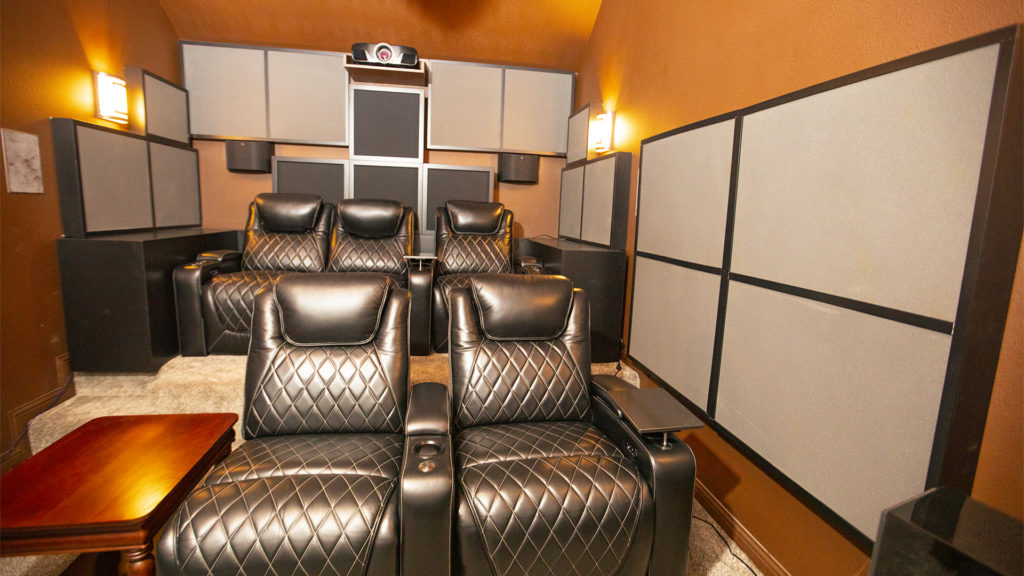
Do Not Use Building Insulation For Your Acoustic Fabric Panels
Not all acoustic fabric panels are created equal. Most of these panels that are in the marketplace are filled with building insulation type materials. Building insulation materials are used to keep your room warm or cool. Building insulation was never designed to be used as an acoustic tool. The rates and levels of absorption that this material type provides are not conducive for music and voice. Music and voice requires a certain rate and level of absorption to sound natural. The level of absorption is defined as how low the panel will work at.
Technology For Music And Voice
The rate is how much absorption occurs at each octave band. Building insulation types over absorb at some frequencies and under absorb at others. This is the common complaint we hear from clients that use this technology type. They use the terms lifeless and dead to describe the sound quality that they hear. Stay with a technology that was specifically designed for music and voice.
Read more about our acoustic foam StudioPro.
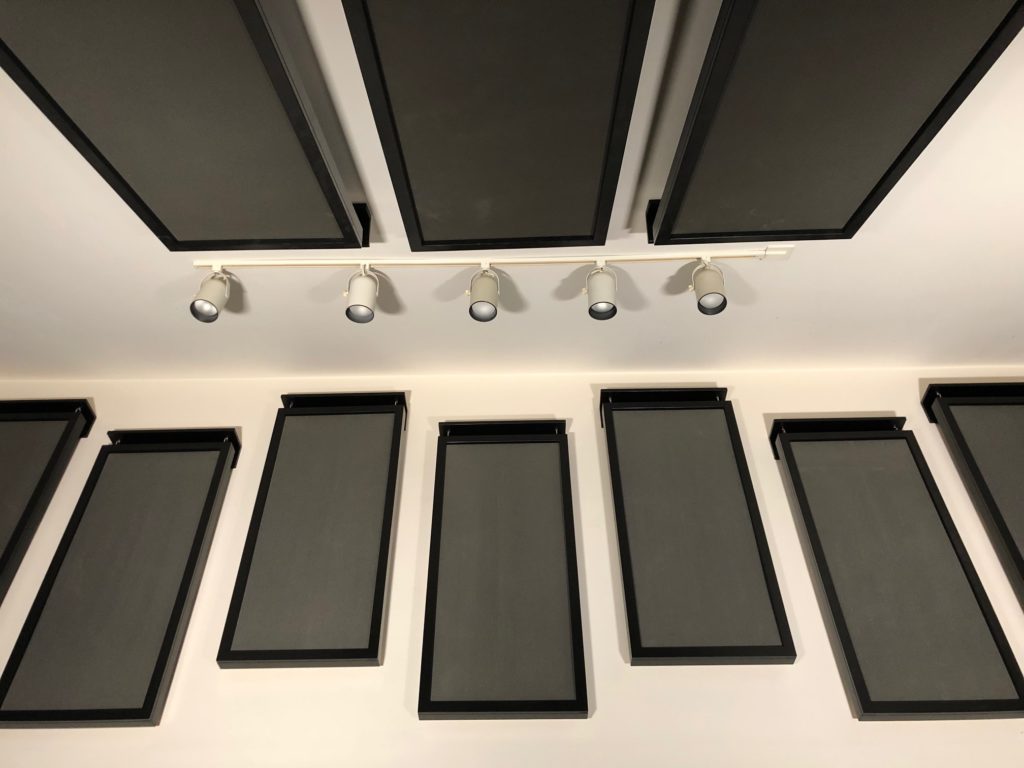
In Summary
Middle and high frequency issues that are addressed by acoustic fabric panels are not the only issues that you must address within your room. Lower frequency issues produce many more distortions within your room than middle and high frequency issues. Lower frequency issues are termed fundamentals. Low frequency fundamentals produce middle and high frequency reflection issues. In any room sonic presentation, you must balance all the frequencies within the room.
The fundamental issues produce room modes that exaggerate certain sounds and can eliminate other octave bands completely. You will hear too much of some sounds and not any of others. If you treat the fundamentals with the proper technologies, you will minimize the impact of the middle and high frequency issues that are produced by the fundamentals. To treat the lower frequency fundamentals, you must use a technology that is designed to work with low frequency pressures.


